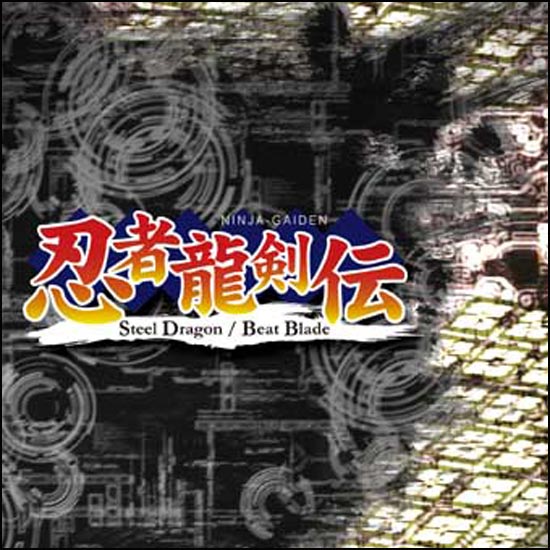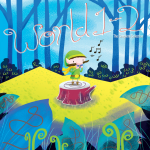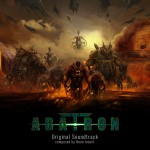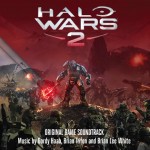Yeah, I said it. I’m not very fond of the Ninja Gaiden reboots that have hit the Xbox and Xbox 360 consoles, and am still in love with the original trilogy that was released on the NES. Not only did the originals have frustratingly difficult level designs that were a lot of fun to master (with the horrible camera issues plaguing the recent releases not being a factor), but the music was absolutely stellar.
As it turns out, Japanese doujin circle earth Japan SOFT feels the same way, as they’ve decided to pay homage to the first game in the series with a fantastically produced arrange album covering some of the game’s most memorable themes. I thought it was time we finally get around to reviewing the album after it’s nomination for best doujin album of 2010 in our OSVOSTOTY 2010 Awards, so if you had no idea what this was before, you’re about to find out!
Hit the jump for a return to the “good stuff” in our review of Ninja Gaiden Steel Dragon / Beat Blade.
Let’s start by talking about earth Japan SOFT. Founded in 2003 and headed by arranger nijeil, who also handles programming, rhythm guitar, and bass on this album, the group has had a slew of releases over the past years dedicated to everything from Ys, Castlevania, and F-Zero with whole albums, to their popular eJ Game Collection series which visits Actraiser, Secret of Mana, and even Ultima Online.
Others also appear on this album as guests, with drums and percussion by Toshiharu Okajima (who incidentally performed drums on the Xenoblade soundtrack) and shakuhachi by Daisuke Kaminaga. You’re probably getting a sense for what you’ll be hearing on this album now… live rock with a strong Asian influence with the shakuhachi, but also lots of powerful ‘80s-esque electronic sounds via nijeil’s synthesizer programming. It’s a wonderful fit for the Ninja Gaiden series with its roots in the 1980s.
The album opens with “eyecatch,” the familiar jingle that plays before each stage in the game. This one has become popular among fans, almost like the iconic Zelda, Metroid and Mario jingles that all videogame fans know. It’s a fun way to start the album before the opening stage music, “The Ninja Dragon” explodes onto the scene with chugging electric guitars and a snare drum that will slap you in the face. The electronic arpeggios from the original are carried over, but the main melody, carried by shakuhachi, takes some liberties with the melody, adding embellishments and doing a wonderful job creating that mysterious “ninja” sound.
There are other stage themes featured on the album, including “Heroism –The Approaching Evil-,“ which chugs along without the shakuhachi for a more synthetic approach. Later “Ryu’s Determination” with its bouncy melody and “Ambush –Pursuit of a Nightmare-“ with its originally fast-paced melody slowed to a pumpin’ 4/4 dance beat feature only nijeil rockin’ trance hybrid sound. It’s hard to deny that the original Ninja Gaiden soundtracks had some fantastic melodies, and they really shine through here.
Ninja Gaiden was known for being one of the first games on the NES to feature a cinematic storytelling style between each stage. The “Mysterious Woman” cutscene music is only 50 seconds long, but is indeed ominous with rhythmic bongos by Okajima and foreboding shakuhachi notes by Kaminaga. Similarly, the music from the touching opening sequence is included here, titled “A Decision –Father’s Letter-,” which opens with an emotional trio of piano, shakuhachi, and what sounds to be a koto. The track picks up momentum with electric guitar and percussion, driving Ryu into battle to find his father. “Sad Fate,” which accompanies a tragic battle at the end of the game, is also cinematic and emotional. As the piece progresses, it takes a more chillout approach with icy pads and a deep bass line.
The final track on the album, “Requiem,” is a sexy-cool track that combines everyone’s efforts once again, working in a gnarly guitar solo (by another guest, Junichi Shimizu) and some fancy synth and shakuhachi embellishments. It’s a strong and satisfying closer to a great yet painfully short release.
While the album is only 25 minutes in length, it features fantastic arrangements of some of my favorite videogame music of all time. I can only hope that eJS gives a similar treatment to the second and third Ninja Gaiden titles on the NES in the future. In the meantime, this one is going to be difficult to find, as it was sold at Comiket 78 and has since gone out of print. If you can manage to find it, be sure to jump on it.
What do you think of the old Ninja Gaiden games on the NES? Was the music really as good as I give it credit for?
Tags: 1980s, Arrangeemnts, earth Japan SOFT, Music Reviews, NES, Nijeil, Ninja Gaiden, Ninjas, Remixers, Remixes, Reviews, Shakuhachi, Tecmo, Toshiharu Okajima









































[…] This post was mentioned on Twitter by 二等兵/nitouhei, OSV. OSV said: Back When Ninja Gaiden Was Good: Ninja Gaiden Steel Dragon / Beat Blade (Review) http://tinyurl.com/4t6fus8 […]
Ninja gaiden 2 on the NES was the best!